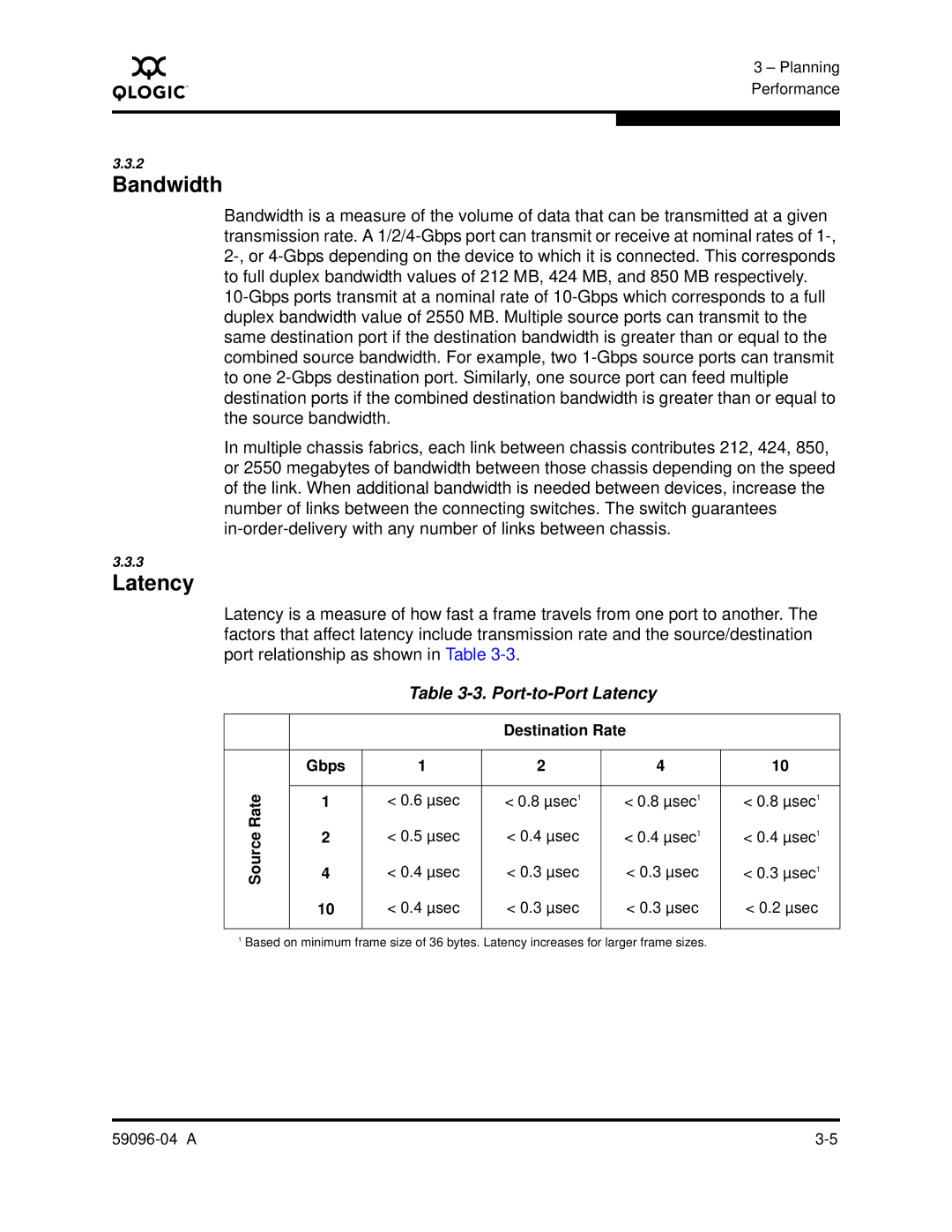
A
3 – Planning Performance
3.3.2
Bandwidth
Bandwidth is a measure of the volume of data that can be transmitted at a given transmission rate. A
In multiple chassis fabrics, each link between chassis contributes 212, 424, 850, or 2550 megabytes of bandwidth between those chassis depending on the speed of the link. When additional bandwidth is needed between devices, increase the number of links between the connecting switches. The switch guarantees
3.3.3
Latency
Latency is a measure of how fast a frame travels from one port to another. The factors that affect latency include transmission rate and the source/destination port relationship as shown in Table
Table 3-3. Port-to-Port Latency
|
|
| Destination Rate |
| ||
|
|
|
|
|
| |
| Gbps | 1 | 2 | 4 | 10 | |
Rate |
|
|
|
|
| |
1 | < 0.6 µsec | < 0.8 µsec1 | < 0.8 µsec1 | < 0.8 µsec1 | ||
2 | < 0.5 µsec | < 0.4 µsec | < 0.4 µsec1 | < 0.4 µsec1 | ||
Source | ||||||
4 | < 0.4 µsec | < 0.3 µsec | < 0.3 µsec | < 0.3 µsec1 | ||
| 10 | < 0.4 µsec | < 0.3 µsec | < 0.3 µsec | < 0.2 µsec | |
|
|
|
|
|
| |
1Based on minimum frame size of 36 bytes. Latency increases for larger frame sizes.
